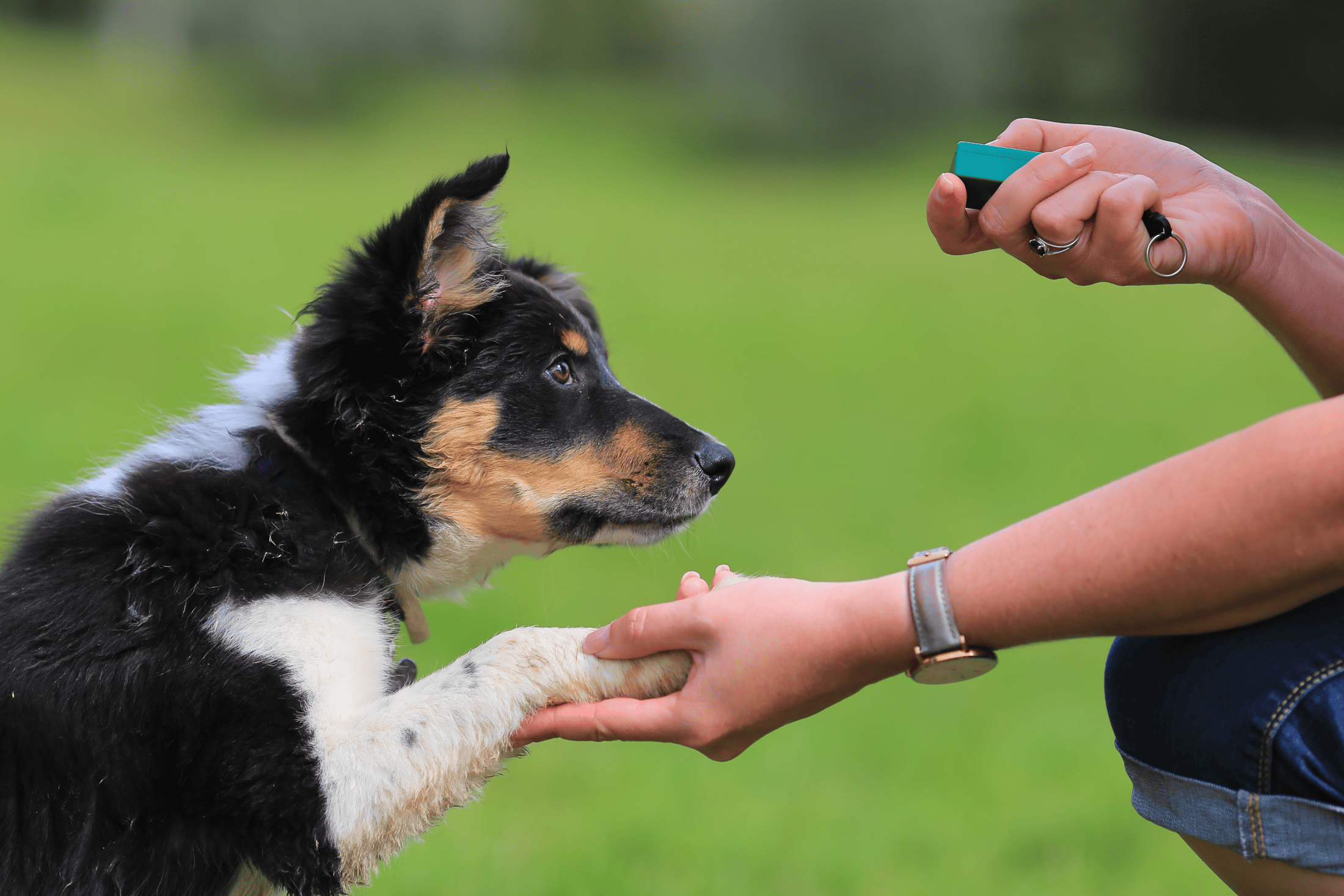
I still remember the first time I saw a clicker. It was the early 90s, and I had been in the animal training world for many years. I had worked with Olympic equestrian teams, so I knew countless animal behaviorists. Everyone was talking about clickers! Suddenly, clicker training was all the rage.
I investigated the little tool in my had. It was simple, lightweight. There was nothing fancy about it. I pressed on the cool metal strip inside the plastic casing, and a crisp, loud click rang out. Well, that’s easy enough, I thought to myself.
Do You Know What a Clicker Is?
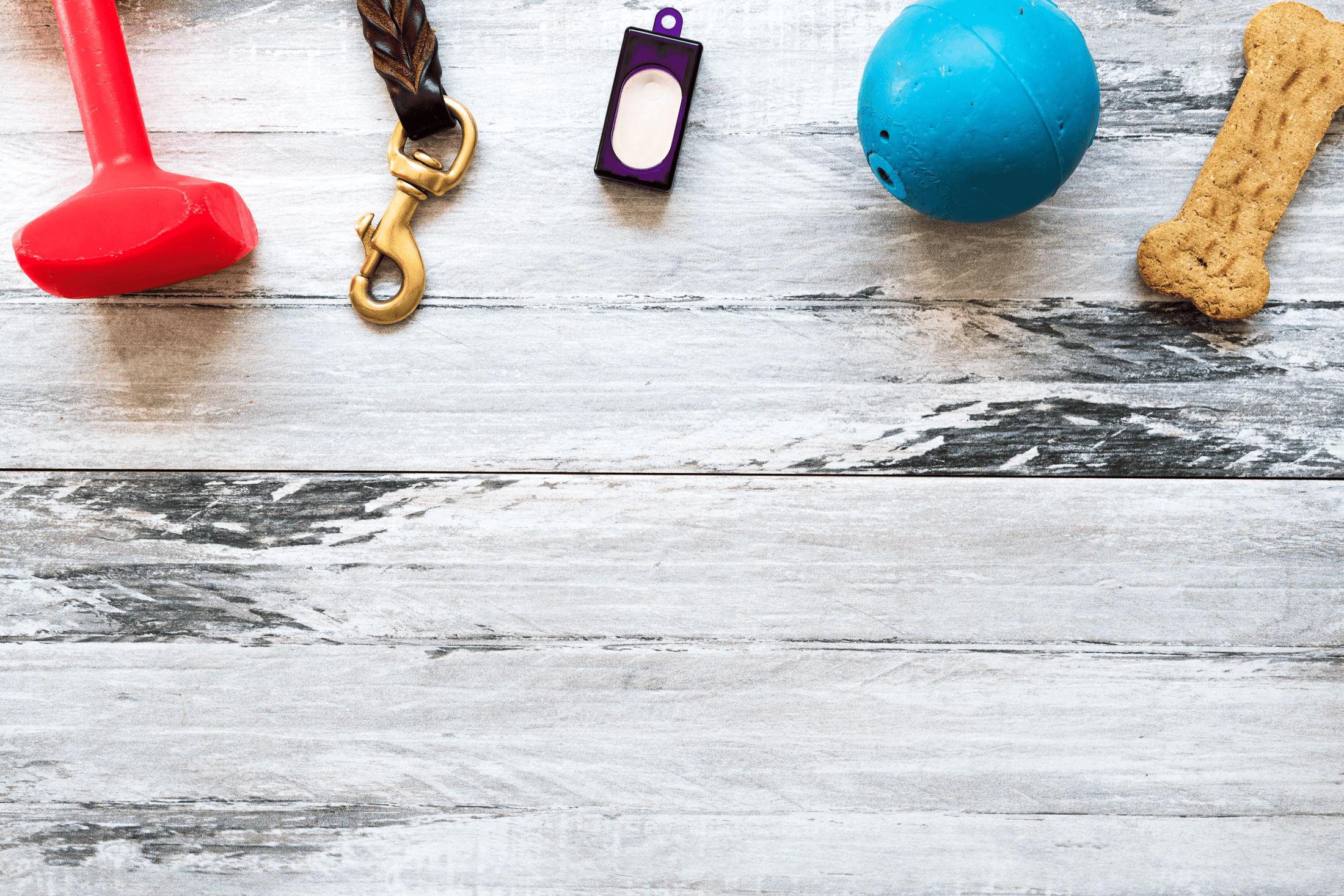
If you enrolled your puppy in training classes, then your instructor most likely handed you a small plastic box on the first day of class. Like me, you might have stared at this little tool with a confused look on your face.
If you didn’t enroll your pup in classes, then this might be the first you’ve heard of these mysterious plastic boxes. So, let’s talk about it!
These little boxes have made a big impact in the dog training world. They are called clickers. And they do exactly what their name suggests.
But what exactly is a dog clicker, and how can it transform your training sessions with your furry friend? Let’s explore the history of clicker training and uncover its secrets.
The Clicker: A Brief History
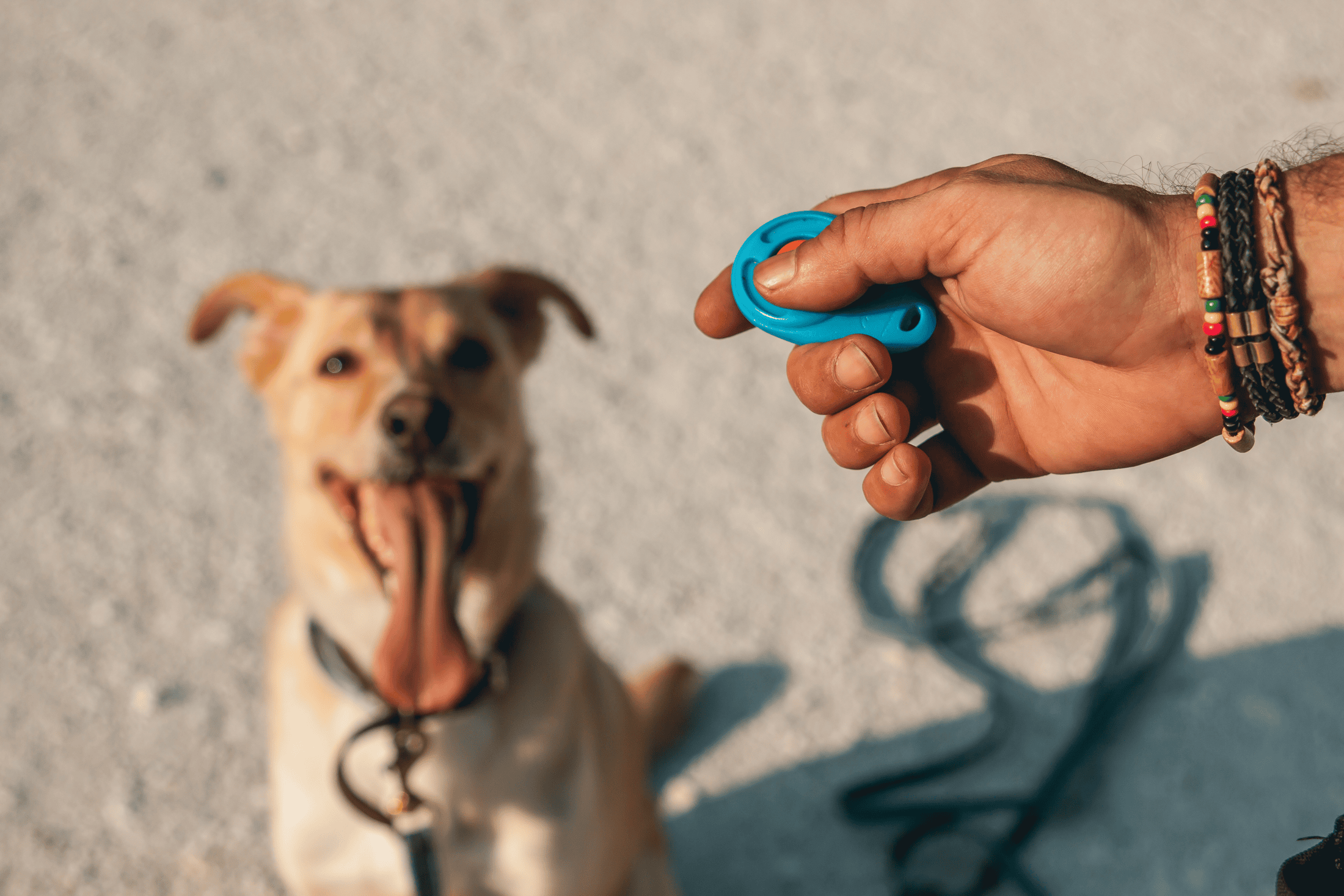 The clicker was created to compliment a training method called Pavlovian conditioning. You may have also heard it called operant conditioning or classical conditioning. This method is a cornerstone of positive reinforcement dog training. If you haven’t heard of Pavlovian conditioning, read on for a brief history lesson.
The clicker was created to compliment a training method called Pavlovian conditioning. You may have also heard it called operant conditioning or classical conditioning. This method is a cornerstone of positive reinforcement dog training. If you haven’t heard of Pavlovian conditioning, read on for a brief history lesson.
Ivan Pavlov, this method’s namesake, was a Russian physiologist. Pavlov had a group of dogs that he studied on a daily basis. And each day, twice a day, the dogs were fed.
The dogs would salivate every time they could smell their dinner being served. If you have a dog, then I’m sure this comes as no surprise to you.
But over time, Pavlov realized that his dogs knew their food was coming before they could smell anything. He found that they were salivating for minutes leading up to their mealtime.
Was this intuition, mind reading, or a good sense of time? Pavlov discovered the answer: The dogs had learned to associate the sound of the research assistant’s footsteps with food. As soon as they heard footsteps, their mouths started watering. They anticipated the food before it was even brought to them.
Clicker Training: How Does it Work?
You might be wondering: So, Where Does the Clicker Come In?
This little history lesson applies to clicker training because Pavlov’s observation developed into the clicker method. The clicker is a small hand-held object that makes a single “click!” noise. Many trainers teach young puppies to link the “click!” sound with a reward.
And how does that help with dog training? Well, dogs are very smart. They know that if they sit when we ask, they will get a reward. At first, this reward is usually a treat. But over time, I like to phase out treats and replace them with even greater rewards: TTouches and affection.
Let’s say you ask your puppy to sit. Then, he looks to the left, shuffles his paws a bit, and sits down. You get really excited and fish for a treat. While you reach in your pocket for the treat, your puppy shakes his head and licks his lips. Then, you give him the treat.
Think about this situation from your puppy’s perspective. Why did you get a treat? Was it because you looked to the left, shuffled your paws, sat down, shook your head, or licked your lips?
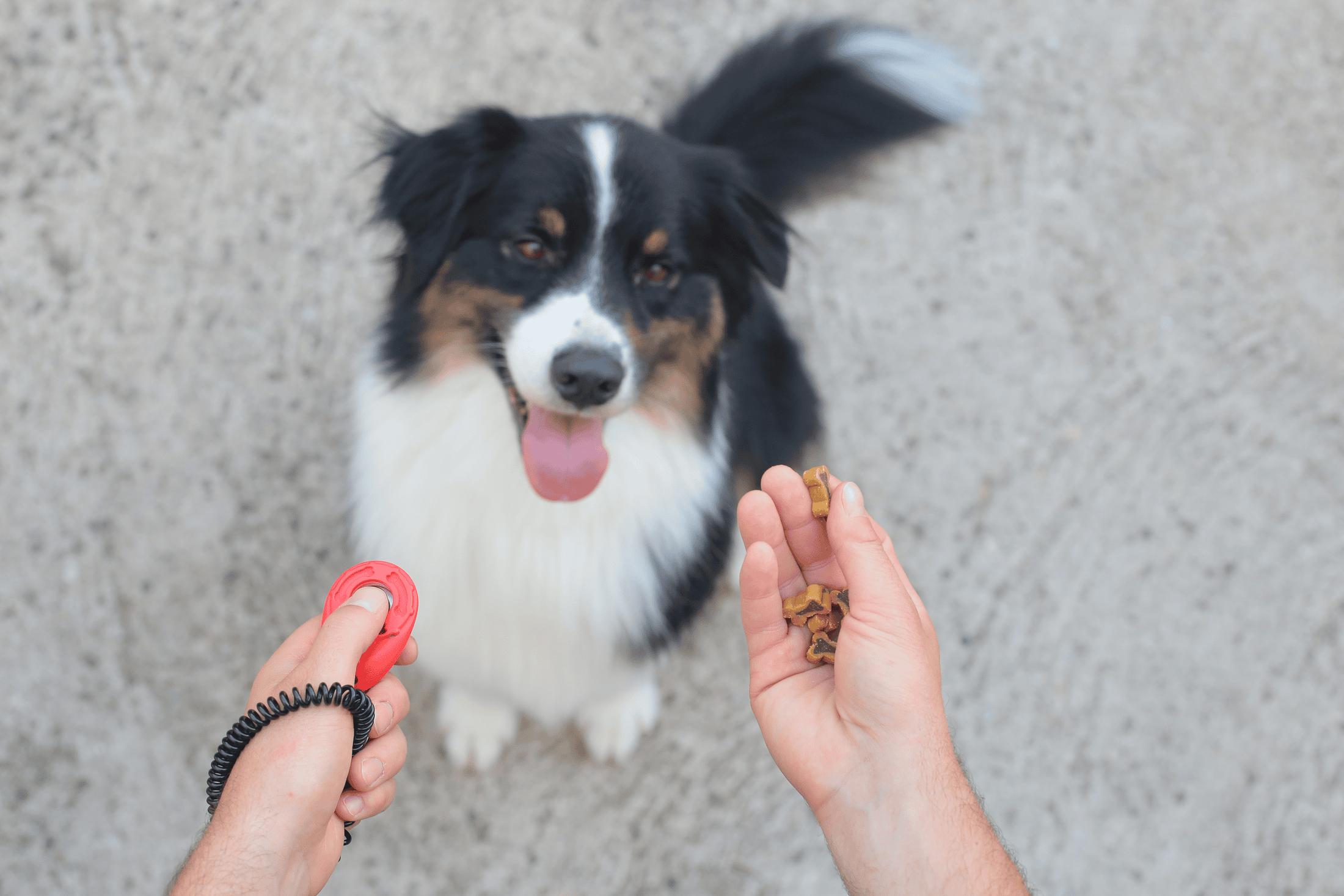
This is where the clicker comes in. The clicker signals the exact moment your dog does what you asked. It bridges the gap between the action and the reward, providing instant feedback.
So, your goal is to “click!” as soon as your dog listens to your cue. She will learn that a clicker means, “Yes! That was great! A treat is on the way.”
Of course, puppies don’t naturally know that a click=treats. So, this next part is pretty fun for them. Your puppy has to learn to associate the sound with the reward. This process is also known as “charging the clicker.”
Charging the Clicker
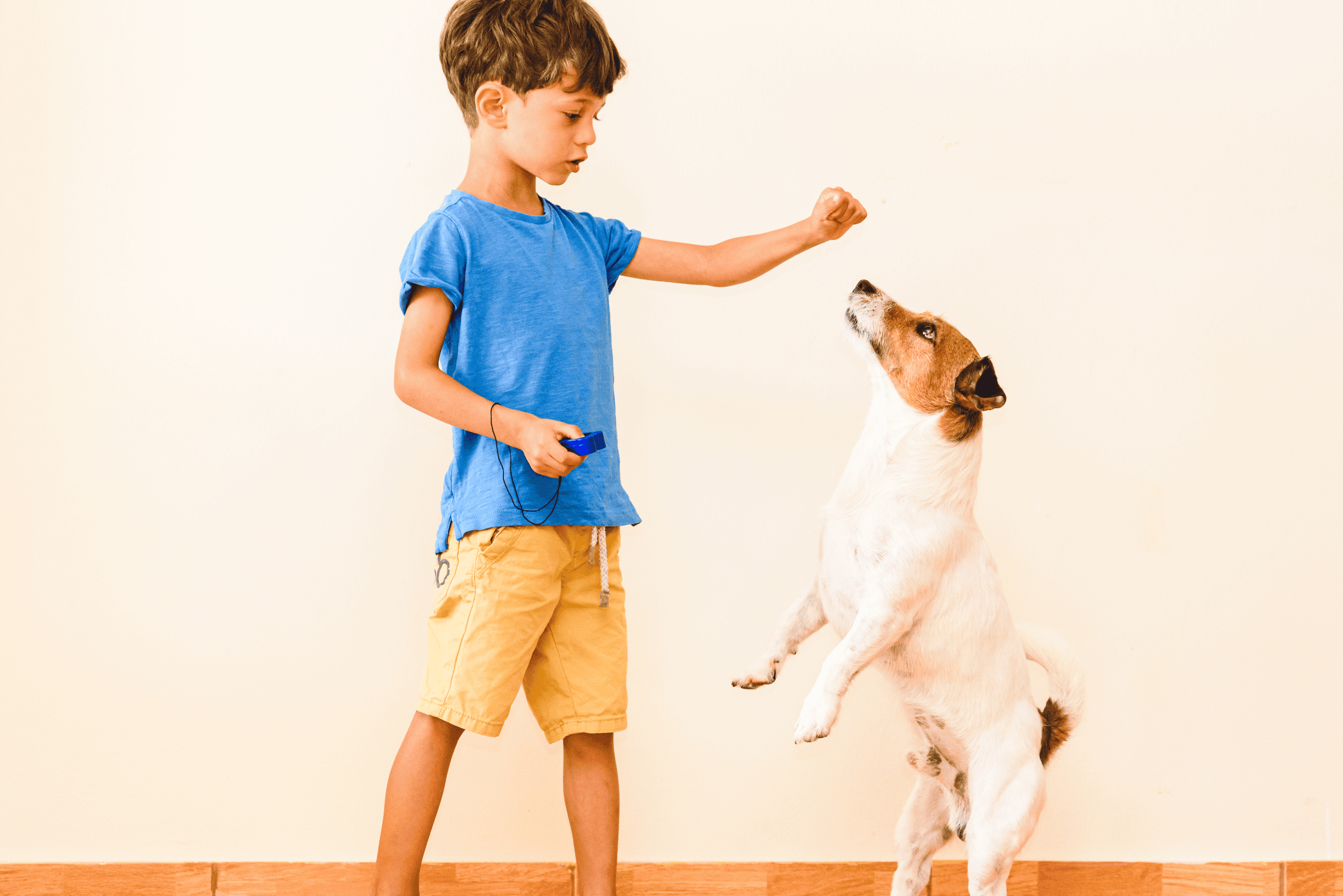 You charge your clicker by clicking it very often at first. And the best part? Your puppy doesn’t need to do anything yet. At first, your goal is just to teach your dog that click=treats.
You charge your clicker by clicking it very often at first. And the best part? Your puppy doesn’t need to do anything yet. At first, your goal is just to teach your dog that click=treats.
It is very important to immediately give your puppy a treat each time you “click!” If you have children, this is a great time to include them. I’ve found that kids love to help with this!
Charging the clicker is really fun for kids, and it helps your puppy create positive associations with children as well. Everyone wins!
Of course, you will want to supervise. I like to make sure that children don’t overdo it with the treats.
Clicker Training: The Benefits
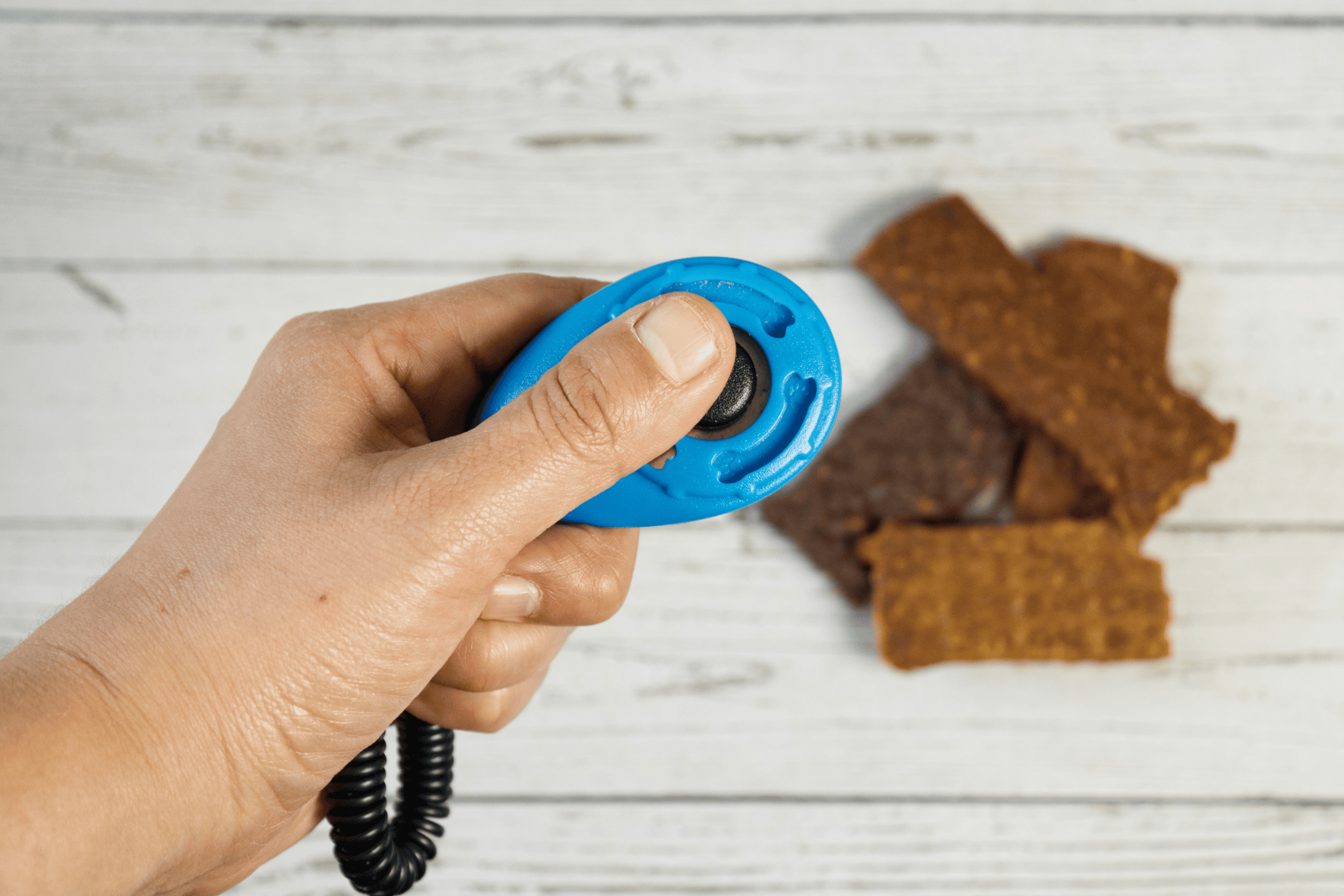 But what sets clicker training apart from other methods? For starters, it speeds up the learning process. The clicker removes a lot of the guesswork. Whether it’s sitting, staying, or rolling over, the clicker captures the precise moment your dog does what you asked.
But what sets clicker training apart from other methods? For starters, it speeds up the learning process. The clicker removes a lot of the guesswork. Whether it’s sitting, staying, or rolling over, the clicker captures the precise moment your dog does what you asked.
Clicker training also improves your ability to communicate with your dog. It’s like having a secret language or texting a friend using codewords. It creates opportunities to communicate with your dog in an easy and efficient code.
Clicker training also promotes a positive learning experience for your pup. By keeping training sessions fast-paced, it lends perfectly to the 1 Minute Dog Training Method.
You build your dog’s confidence by making training fun. There’s no need for punishment! Studies have shown that positive reinforcement is the best way to train your dog.
Clicker Training: Tips and Tricks
Now that you’re familiar with the basics of clicker training, how can you incorporate it into your daily routine? Here are my top tips to get you started:
- Charge the Clicker: Begin by pairing the “click!” sound with a tasty treat. Click the clicker and immediately follow it with a treat. I repeat this process until my puppy understands that the click means good things are coming her way.
- Start Simple: Focus on teaching basic cues such as sit, stay, and come using the clicker. Break down each skill into small steps, and click and reward your dog for every success.
- Be Consistent: Use the clicker consistently. At first, be sure to always follow it with a treat immediately afterward. This helps strengthen the connection between the action and the reward.
- Keep it Fun: Make training sessions enjoyable by incorporating games, toys, and plenty of praise. Keep the atmosphere positive and upbeat. Work for just 1 minute at a time. You will see how excited your dog will be to train with you!
- Practice Patience: Remember that learning takes time, so be patient with your pup as he navigates the training process. Celebrate progress however small, and end each session on a positive note.
So, Do I Clicker Train My Dog?
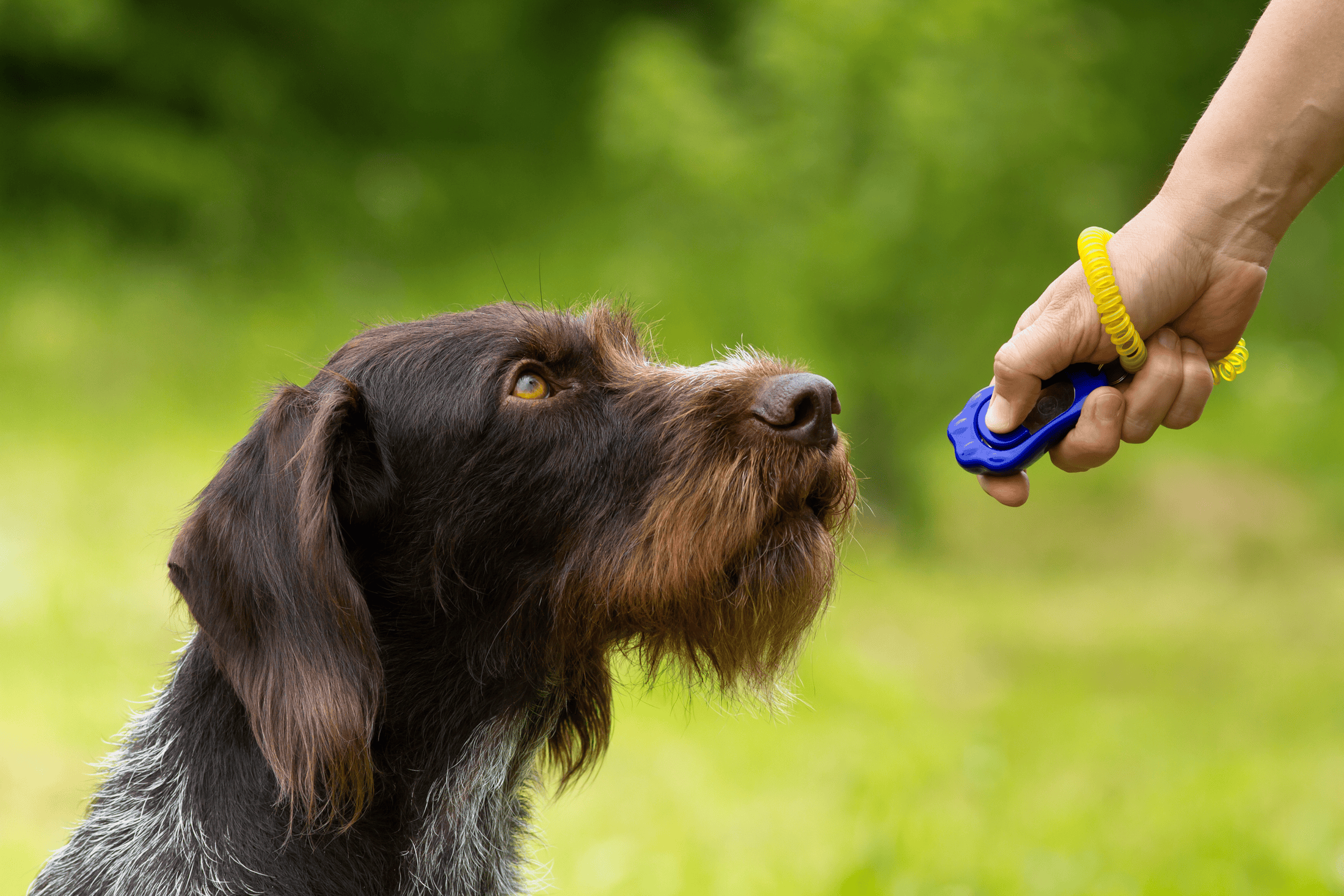
All of that said, I didn’t use a clicker when I trained my puppy. Why? The answer is simple: I don’t always have a dog clicker handy.
But that’s the beauty of Pavlov’s findings! You don’t actually need a clicker. You can train your puppy to associate any sound with rewards. Maybe you prefer to use a marker word like “Yes!” or you can make a clicking sound with your mouth. Anything works really. Just remember to charge the word or sound like you would with a clicker.
Do whatever is best for you. If you’re training your dog with your family, a dog training clicker might create the most consistent noise. Just make sure everyone in your family is on the page!
So why wait? Grab some tasty treats, and embark on an exciting training journey with your puppy today. With the click of a button and the promise of a treat, you’ll be amazed at what you and your pup can accomplish together.






